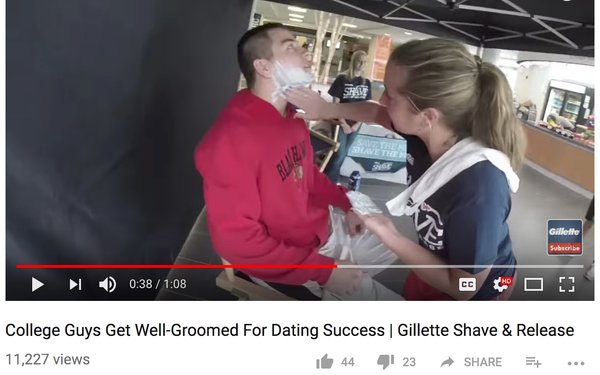-
by Ben Zifkin
, Op-Ed Contributor,
September 12, 2017
Five years ago, you likely read numerous articles outlining the success of Dollar Shave Club. Nearly all of them focused on Dollar Shave Club’s famous viral marketing video.
Today, it’s clear that Dollar Shave Club didn’t win because they made an entertaining video.
Dollar Shave Club won because they had their finger on the
pulse of a new, growing group of consumers — a group that Gillette, their established rival, missed.
The Psychographic Only Dollar Shave Club Saw
A demographic will tell you what age group, region, ethnicity, and income level a person belongs to. If a brand knows they are popular with 30-40 year old Hispanic men with high income
levels, they may try to align their marketing more with that segment.
A psychographic, on the other hand, groups people by their interests and behaviors.

Source: Research Optimus
advertisement
advertisement
What Dollar Shave Club saw was the emergence of a completely new psychographic. A new group of consumers who wanted retail experiences that were comfortable and as simple as
possible.
They didn’t want to go to a store and pay a markup on razors. They didn’t want to ask an attendant to go remove the razors from a case. They didn’t
want to rush to the store at 5 a.m. before work because they forgot to buy more razors last time they were in the store.
Dollar Shave Club offered a stripped down, convenient
service. Simple razors that get the job done, mailed directly to your house each month, for only $1.
Why Didn’t Gillette Get There First?
Gillette is the original major razor brand, founded in 1901. In 2005, when they were bought by Procter and Gamble, with an acquisition cost of $54 billion.
All of this is to say that Gillette is by no means a failure who was brought to
its knees by a disruptive startup. Gillette is just an older, mega-brand that advertises like an older, mega-brand.
Where Dollar Shave Club was focused on innovating and finding a
new psychographic to serve, Gillette’s advertising followed a simple formula:
- Identify a target demographic.
- Create
advertisements based on general demographic information.
- Broadcast those advertisements to as many people as possible.
For example,
Gillette ran a promotion trying to market to Millennials by showing female college students shaving male students:

Compare this campaign to how Dollar Shave Club
markets to the same audience, and it’s immediately clear that Gillette is focused more on demographics, rather than psychographics.
Why Listening To Loyal Customers Isn’t Enough
The traditional advice is to “listen to your customers” and get better at serving them. Gillette
does this very well, and continues to be successful.
However, Dollar Shave Club has amassed an enormous percentage of the market by anticipating the new emerging market, and
speaking directly to their values and lifestyles.
Brands need to remain open to the shifting cultural landscape. What new group of consumers is emerging? What psychographics
define them? How do they want to be served?